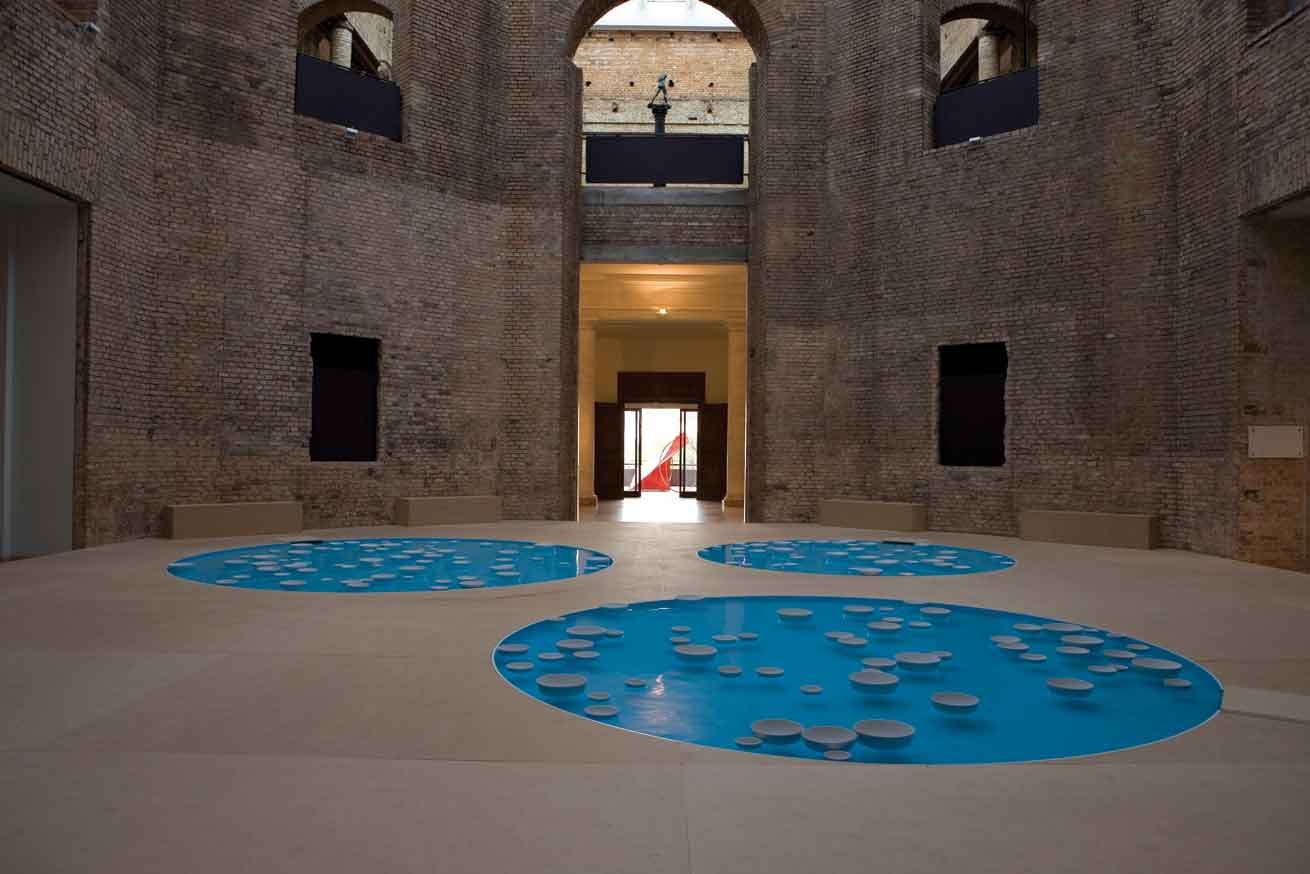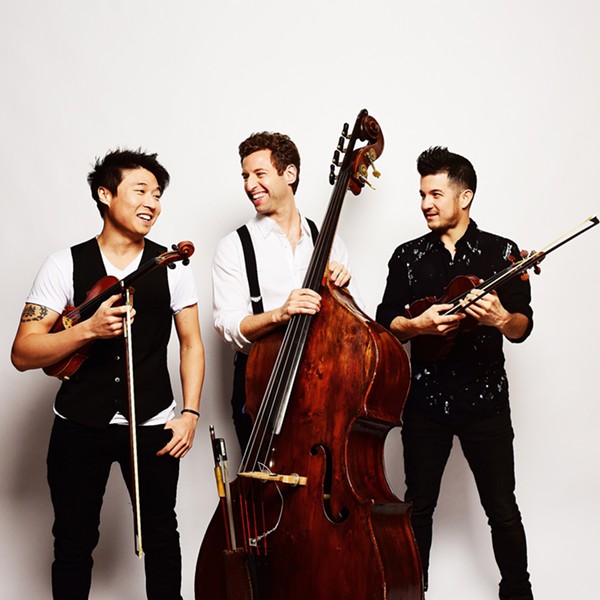
Installation view from Céleste Boursier-Mougenot’s Variation, Pinacothèque, Sao Paulo, Brazil, 2009. Boursier-Mougenot will install his index (v.4) at EMPAC this month.
Can a piano play itself? Céleste Boursier-Mougenot answers this question with an art installation at the Experimental Media Performing Arts Center (EMPAC) in Troy, opening May 11.
index (v.4) consists of two “player pianos” performing music generated by a computer program that translates the typing of EMPAC employees into musical notes. Depending on how busy the typists are, the music will be profuse or spare.
Every four-year-old has noticed the similarity between a piano and a computer. We use the same word—“keyboard”—to describe the parts of both implements that our fingers touch. Celeste uses this pun to connect two opposites: work and play. We’re not used to piano keys playing without hands, unless they’re performing ragtime music at a carnival. Seeing index (v.4), you feel as if you’re overhearing a grand piano talking to itself.
Installed between the two pianos will be untitled (Series #3), three pools of water with air pumps pointing across their diameters, creating a regular current. Floating in the water will be bowls, dishes, and glasses, clinking together in unpredictable patterns. The effect is a bit like wind chimes, but more accidental sounding. (After all, wind chimes are intended to produce music and crockery is not.)
This piece illustrates how sound influences vision. We hear the blue of the pools, the white circularity of the bowls. Also, we can watch a bowl and a glass on a collision course. The final sound of them clanking is unexpectedly satisfying.
Céleste Boursier-Mougenot was born in Nice, France, in 1961. He was trained as a composer before moving into visual art. His biggest “hit” on YouTube is a video of guitar-playing zebra finches at the Barbican Centre in London. Boursier-Mougenot set up an aviary with electric guitars as perches. When the birds would light on the instruments, they played music. These cheerful, fluffy little birds work against our expectations of rock guitarists. They don’t close their eyes, grit their teeth, and grimace as they play solos. Instead, they flutter their wings.
EMPAC Music Curator Micah Silver first saw Boursier-Mougenot speak at Wesleyan University in 2001. “I forget what I asked him, but he said to me: ‘You can’t get real complexity without nature.’ To me, there’s something really beautiful about that idea—that as much as we have algorithms, machines that can model all sorts of phenomena, still if you turn a situation over to nature, very, very unusual things happen. Even with something as simple as having three pools with a current. You still can’t predict what the next sound will be.”
All live music is visually interesting, but one is always focusing on people.
Boursier-Mougenot depopulates musical performance. Instead of watching a pianist, we watch the piano. But the ghost of a performer always remains. The viewer wonders, “How random is this music?” John Cage composed using chance techniques derived from the I Ching—usually by flipping coins. Today, the technology exists to transform chance into a science.
Still, Boursier-Mougenot chooses the floating bowls, and tweaks the computer program that translates typing into piano notes. Ultimately, he selects the general range of sounds. And he prefers melodious bowls, poignant self-playing piano music. Humor inflects this work, but his are jokes without punchlines. Perhaps the role of the viewer is to complete the joke.
“My works are made to be forgotten,” Boursier-Mougenot says. “They do not require a focus listening, but rather they produce a music that listens to us.”
Céleste Boursier-Mougenot’s installations will be at EMPAC in Troy from May 11 until September 1. (518) 276-3921; www.empac.rpi.edu.















